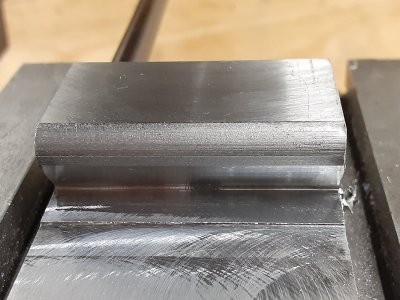- Joined
- Sep 20, 2019
- Messages
- 1,394
That's not my style, so I drew it up in Acad and interrogated for the dimensions. This is the smaller one.Funny you should ask. Randy didn't actually provide the numbers in his video, he just used an insert to establish the cut and tap locations.
That's not my style, so I drew it up in Acad and interrogated for the dimensions. This is the smaller one.
View attachment 413593
The lathe work is pretty obvious, here's the setup for milling the insert seat.
View attachment 413594
I need to do a little work on the drawing for the larger one.
So, it looks like you were able to cop-out Randy for those dimensions with your mad skills!
 Sorry, I couldn't resist!
Sorry, I couldn't resist!
